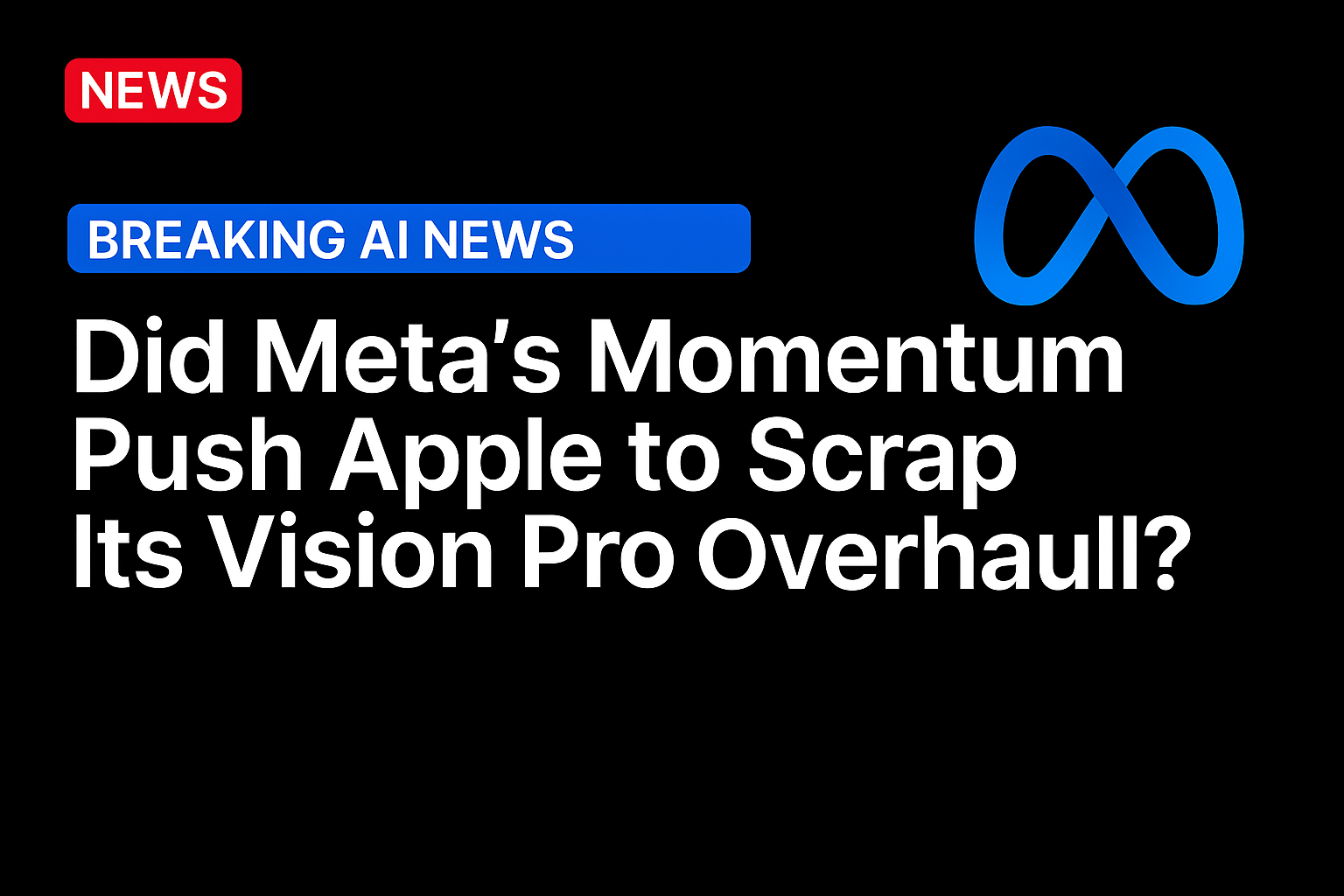
Apple is pausing development of its next Vision Pro headset and shifting engineers toward smart glasses, according to Bloomberg. The move reflects the company’s recognition that lightweight eyewear powered by artificial intelligence is emerging as the next competitive arena. Meta’s Ray-Ban Display glasses, introduced this year, have already given consumers a glimpse of what AI wearables can deliver, and Apple is adjusting to keep pace in a market that could one day rival the smartphone.
Redirecting the Vision Roadmap
Bloomberg reports that Apple has reassigned staff from its planned “N100” Vision Pro successor to work on two glasses projects. One, code-named N50, will tether to the iPhone and forgo its own display. Another, which will include an integrated screen, is intended to compete directly with Meta’s Ray-Ban Display. Apple had planned to release the display-equipped model in 2028, but Bloomberg notes the timeline has been accelerated.
The Vision Pro itself, released in 2024 at $3,499, has not achieved the momentum Apple hoped for. Bloomberg reports that executives have acknowledged its shortcomings in private, citing cost, weight, and a limited app ecosystem, and described parts of the device as overengineered. Consumer interest has declined since launch, and Apple has shifted its marketing toward businesses.
Apple is also developing chips specifically for the glasses, designed to support cameras, speakers, and sensors while conserving power. Bloomberg notes that the devices are expected to rely heavily on voice commands and AI, with a rebuilt Siri slated to anchor the experience.
Meta’s Momentum
Meta has already moved through multiple cycles of smart eyewear. It launched Ray-Ban Stories in 2021, followed by Ray-Ban Meta in 2023. Its latest device, the Ray-Ban Display, debuted this year at $799. PYMNTS reported that the glasses incorporate a small lens display and gesture controls while retaining the familiar Ray-Ban frame. PYMNTS also noted that Meta’s strategy has been to emphasize practicality, offering navigation, video capture and AI prompts in a lightweight package.
Bloomberg reports that the Ray-Ban Display has generated strong early buzz and that Meta is preparing a follow-up for 2027 that will use dual displays. For Meta, which has had uneven success in hardware, smart glasses represent a rare bright spot.
What to Watch
Apple has been slower to advance in AI and voice technology. PYMNTS reported that its Siri overhaul, designed to work like a ChatGPT-style assistant, remains in internal testing. That lag has given competitors an opportunity to set the pace.
The broader field is expanding quickly. PYMNTS reported that Amazon has unveiled a new suite of Alexa-enabled devices built specifically for AI-powered interactions, while Google is working on its own AI-centric hardware lineup. Meanwhile, OpenAI has confirmed it is collaborating with former Apple design chief Jony Ive on consumer hardware projects.
Smart glasses have “emerged as a critical arena” for tech companies, Bloomberg reports, and future designs could challenge smartphones as must-have devices. Apple is now aligning its strategy with that shift, even as it concedes early leadership to Meta and others.
The Market in Flux
Smart glasses have “emerged as a critical arena” for tech companies, Bloomberg reports, and future designs could challenge smartphones as must-have devices. Apple is now aligning its strategy with that shift, even as it concedes early leadership to Meta and others.
If Apple succeeds, the glasses could become a new pillar of its ecosystem, tightly integrated with iPhones, Watches, AirPods, and services. For now, Apple’s pivot illustrates a company recalibrating its ambitions in real time. Instead of setting the agenda for personal technology, it is adapting to a market where others have already staked out an early lead.
Source: https://www.pymnts.com/




